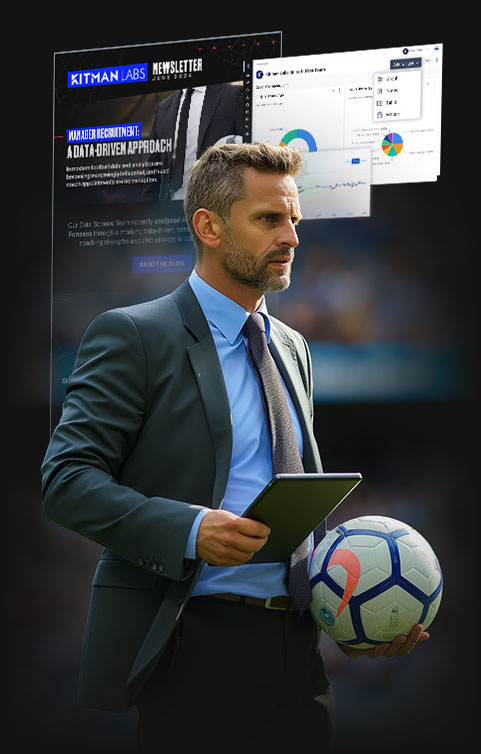At Kitman Labs, we have experience of working with elite sporting organizations to identify and select talent through the draft process, for example from our work with the Western Bulldogs. For the 2024 NFL Draft, we used our AI models on NCAA and NFL datasets from 2010 to present to identify players that we think will be successful in the NFL. The draft is not a perfect system; first rounders can be busts, while late round picks can turn into superstars. Below we highlight 5 sleeper picks, that although being projected to go quite low in the draft, our AI believes could have significant potential for NFL success.
Bo Nix: Oregon Ducks Quarterback
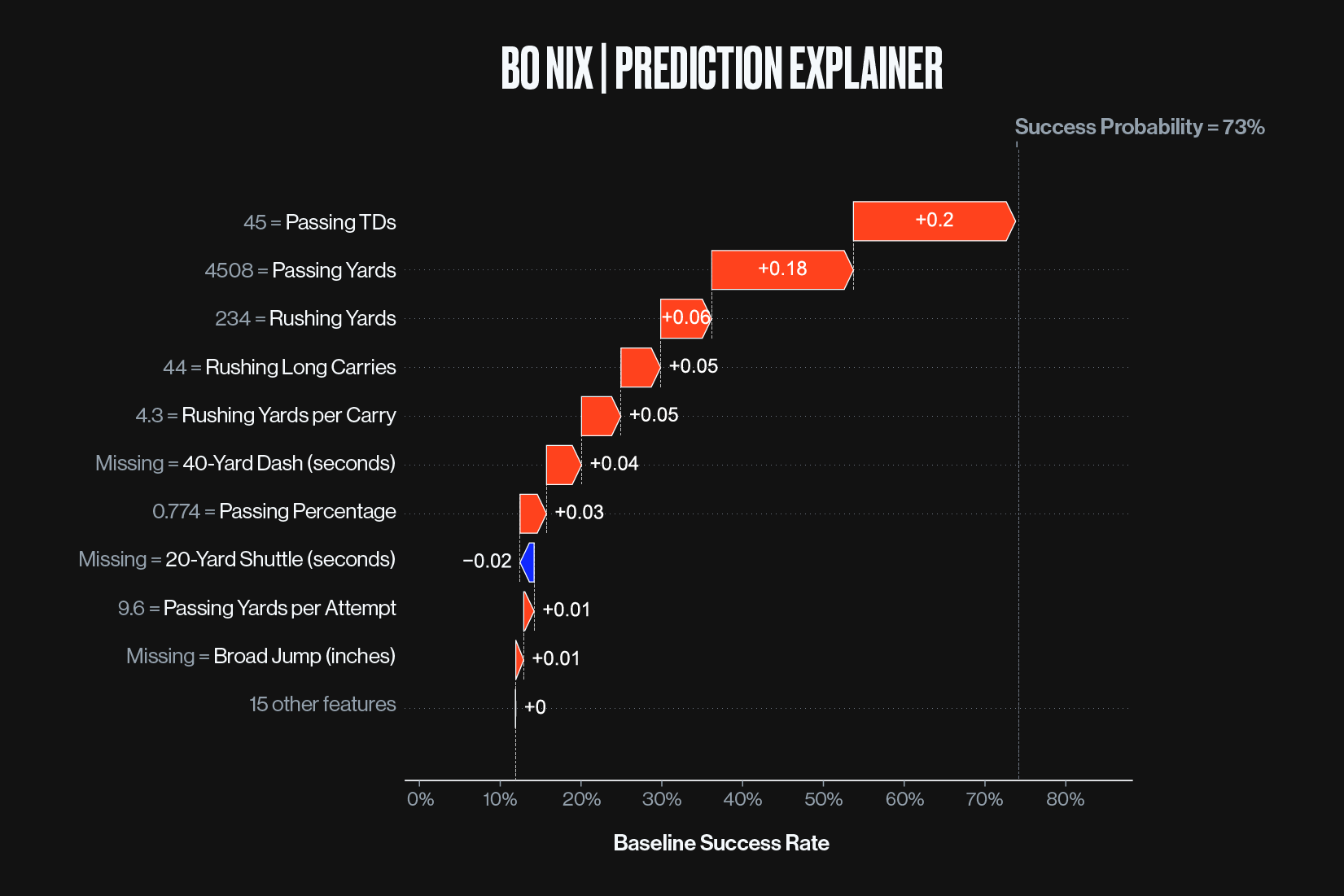
*NFL Draft Projection: 5th QB Selected
Kitman AI Projection: 73% chance of NFL Success – 1st QB
Looking like coming in at a 2nd round pick, Bo Nix ranks as the most likely Quarterback to be successful in this year’s NFL draft. Looking at his college stats it is easy to see why the model has this belief. 34 passing Touchdowns in your final college season are required by the model to have a significant increase in NFL success – Nix has 11 more. He also surpasses the threshold for yards by nearly 700 and his completion percentage is over 6% higher than required. While his rushing stats are not standout, the number of yards gained last season is high enough to show athletic ability, and his yards per carry is significantly over the threshold required by the model to increase his success rate.
Joe Milton III: University of Tennessee Quarterback
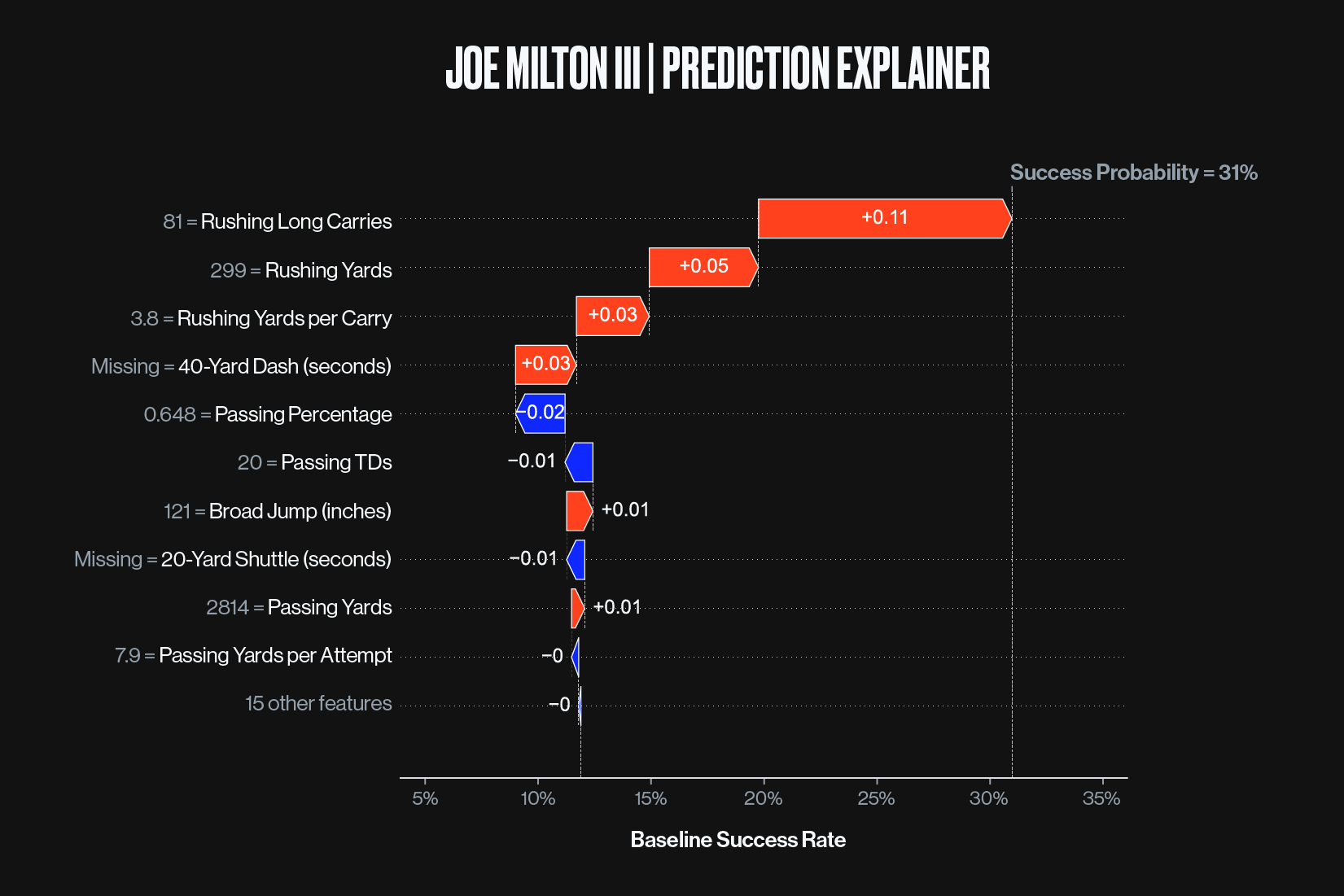
*NFL Draft Projection: 10th QB Selected
Kitman AI Projection: 31% chance of NFL Success – 3rd QB
Something that is apparent when investigating what our model values in a successful NFL QB, is that it believes that a Quarterback must possess either absolute elite arm talent, or have the explosive rushing ability to make splashy plays. While the AI model highlights that Milton’s does not rank amongst the elite prospects in passing, and punishes him accordingly, it sees his rushing ability and gives him a significant chance of lasting several years in the league. Coaches and GMs may feel they can mould an athletic prospect, seeing future potential, and this phenomenon is something the AI may well be reaching back to.
Kendall Milton: Georgia Bulldogs Running Back
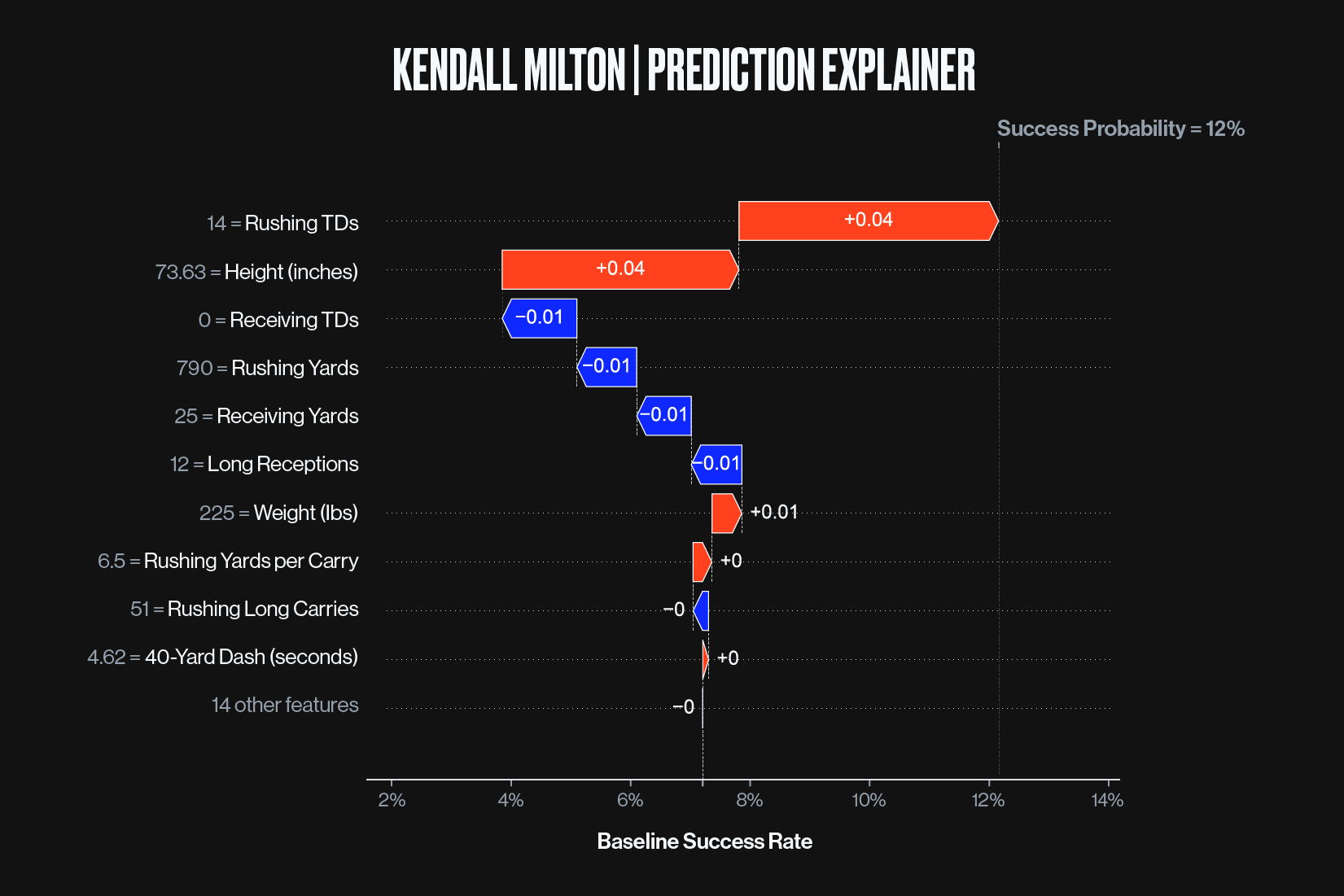
*NFL Draft Projection: 17th Drafted RB
Kitman AI Projection: 12% chance of NFL Success – 4th RB
Our AI model shows that an ability to get into the end zone in college is the number one indicator of future NFL success, far more so than yards, efficiency, or speed. With 14 rushing Touchdowns in his final college season, Kendall Milton exceeded the required threshold for NFL success by 3 touchdowns. Our model also surprisingly rewards physical stature, with a taller running back being more likely to be successful. Perhaps this is due to a taller player’s greater ability to effectively carry mass, or their ability to participate in an NFL passing game. Whatever the cause, at over 6’1” Milton is one of the taller backs in the draft and the model rewards this accordingly. While Kendall Milton does have some drawbacks – the model penalizing him for lack of receiving ability and him not hitting a required threshold in rushing yards – his ability to put points on the board sees him nearly twice as likely as to be a successful NFL running back than the average prospect at his position.
Malik Washington: Virginia Cavaliers Wide Receiver
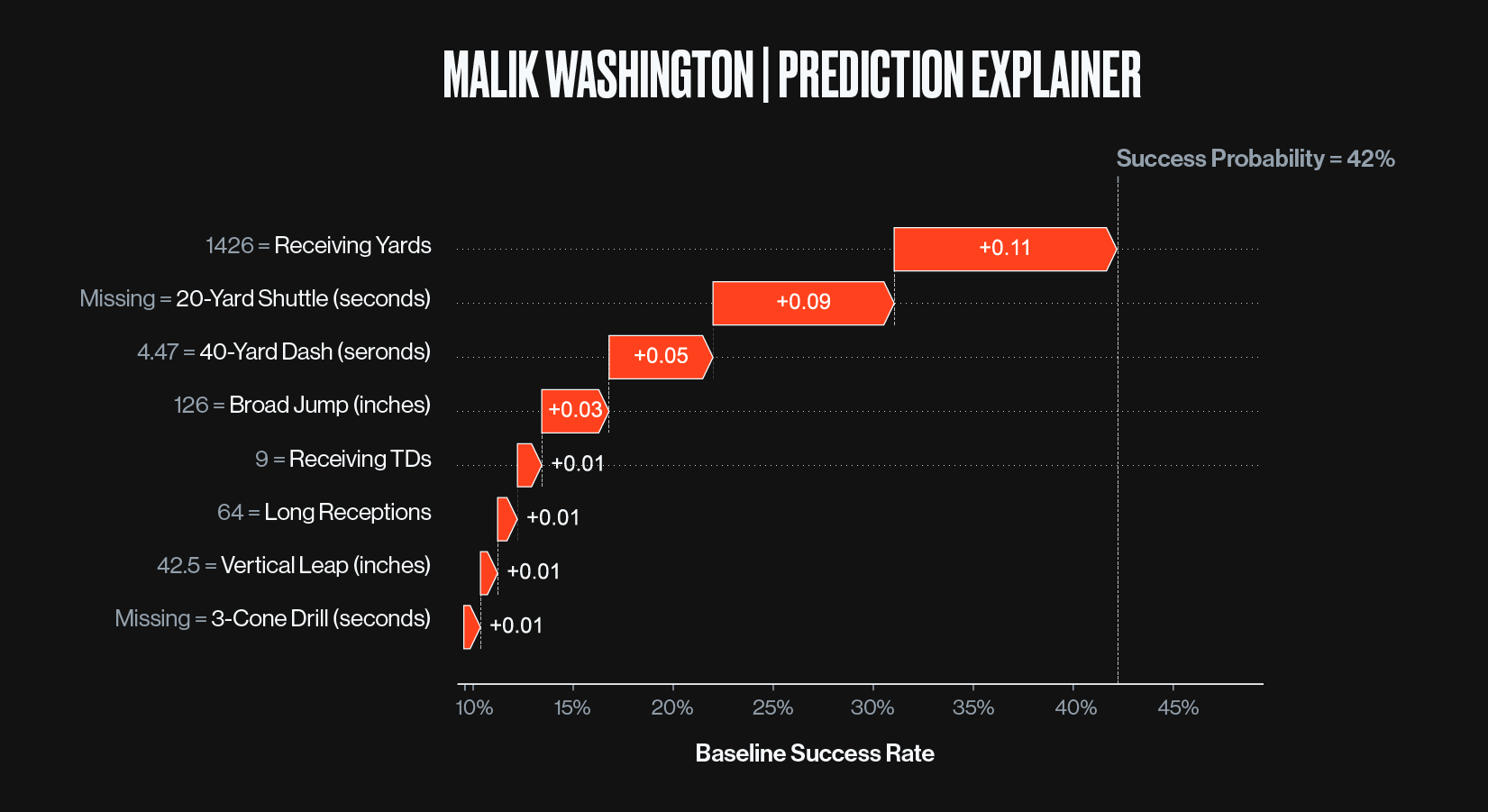
*NFL Draft Projection: 21st Drafted WR
Kitman AI Projection: 42% chance of NFL Success – 3rd WR
In a stacked 2024 WR draft class – our model rates this is by far the best class of the last decade and a half – it’s not surprising that some top tier talent is going to go in later draft rounds. However, our AI model surprisingly projects Malik Washington as being one of the top prospects in this year’s class. College receiving yards is the main indicator of future NFL success and longevity, and with 1426 yards in his final season Washington has approximately 40% more yards than the model believes necessary for a significant increase in NFL success probability. His 40 time of 4.47 seconds is also deemed fast enough to stand up in the NFL. Though this is right on the threshold our model has identified, in combination with his receiving yards and other statistics it significantly increases his chances of success. Interesting nugget; Washington did not participate in the 20-yard shuttle in the combine, but the AI has inferred from his other statistics he would have excelled at this.
Tahj Washington: USC Trojans Wide Receiver
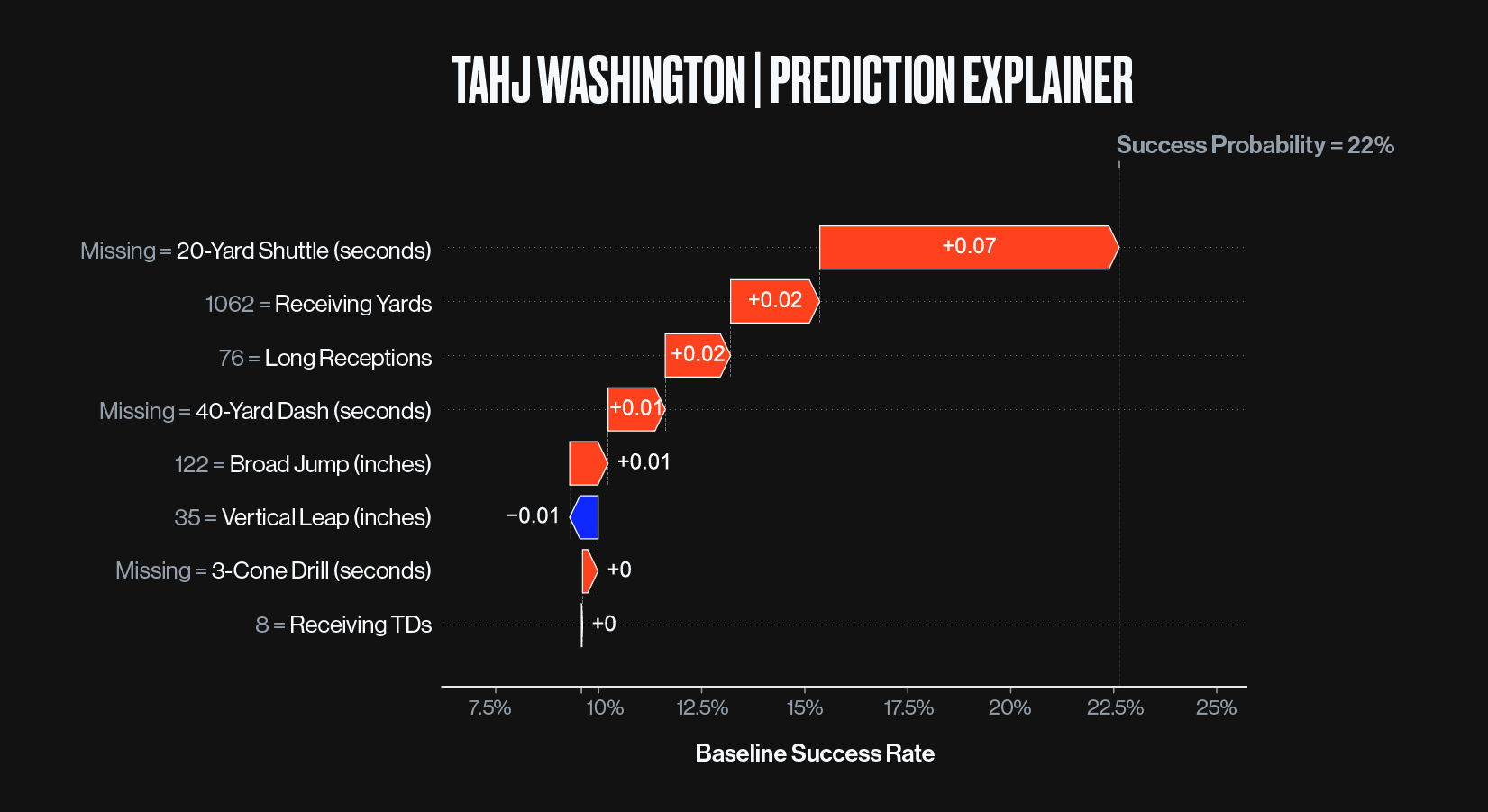
*NFL Draft Projection: 29th Drafted WR
Kitman AI Projection: 22% chance of NFL success – 15th WR
Tahj Washington is a curious case for our AI model. Not having participated in the 20-yard shuttle, the 3 cone drill, or the 40-yard dash at the combine, there are a lot of unknowns about this player. However, given his receiving yards, and his strong showing in both the broad jump and vertical leap, the model has inferred that he would have competed well, particularly in the 20-yard shuttle. Having completed these tests at his pro day, a dataset the AI had no access to, we can see he is potentially slightly below average in the 40 and 20 yards drills, but elite in the 3 cone drill. How this information would have influenced the models is unclear; however, overall the 3 cone drill ranks as the third most important feature for projecting success, so while the exact inference was wrong the model has seemingly correctly identified some possible elite athletic behavior from other available statistics. Washington still only ranks as 15th in our list of receivers, but given he is projected to be a day 3 pick and his success probability is twice that of an average WR, he still may present significant value in the draft.
*According to ESPN mock drafters
CONCLUSION
After months of scouting and analysis, NFL teams are going to select their new squad members in Detroit over the coming days. Some of these players are known quantities, and teams will be sure of their potential for success over the next few seasons. However, there will be surprises; players will be picked in later rounds and develop into true NFL stars.
Looking at trends of what made the NFL legends of the past, AI can help to identify the NFL greats of the future. While AI will never replace elite scouting and roster planning, it may supplement the top practitioners, highlighting players to take another look at or ones to assess differently to how players have been evaluated in the past. Here we introduce our Kitman Labs AI model to the problem of identifying future NFL players and highlight some potential future stars. The AI is unlikely to be perfect, and not all the players it identifies will live up to their potential, but it may prove a useful tool in a scout’s arsenal.
Kitman Labs’ Performance Experts work with organizations across global sport to help them identify and develop the best young talent, and to prime these elite athletes for performance. To find out more about how Kitman Labs can help you unlock the limits of human accomplishment, contact sales@kitmanlabs.com.



